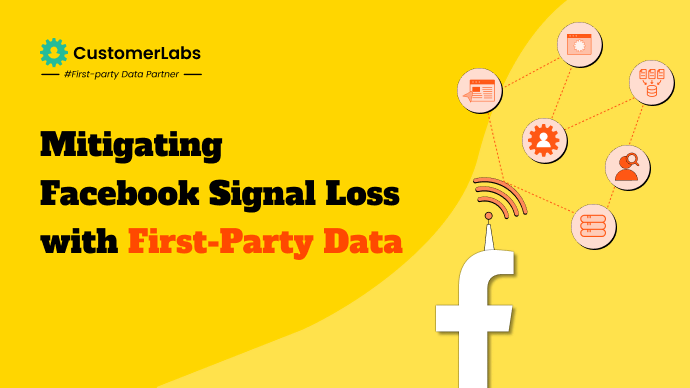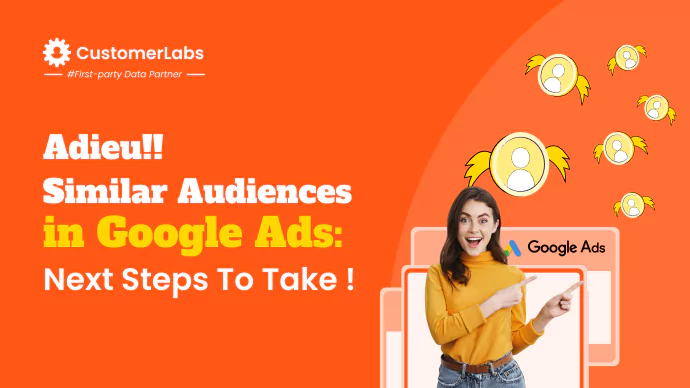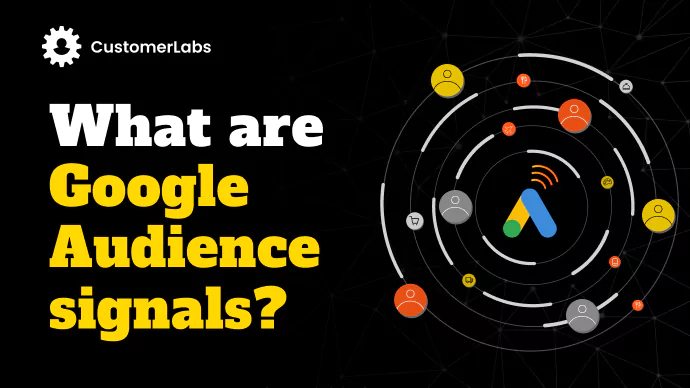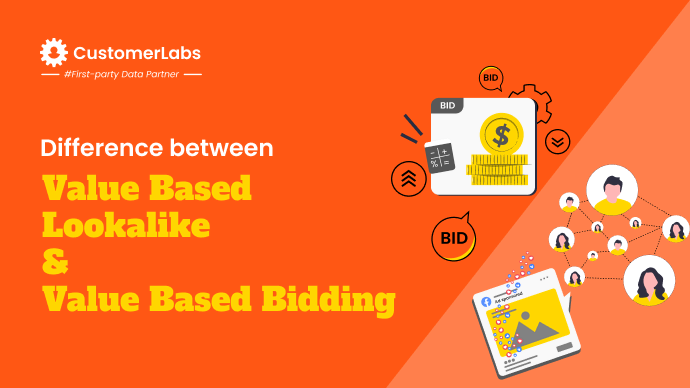
Value based lookalike (VBL) and value based bidding (VBB), are two concepts that have picked up interest among the marketers recently. Both VBL & VBB revolve around value but are as different as sky and land. Former is a feature in Meta Ads while the latter is a feature in Google Ads. Each of these have their unique advantages.
Let’s see in detail the differences and how each of the two help you. Delve in.
Is Value Based Lookalike Audience Similar To Value Based Bidding?
Value based lookalike audience finds audience who are similar to your existing high value customers.
Value-based bidding strategy helps you maximize the conversion value after you setup conversion tracking.
Both are two different concepts. One is finding the audience, the other is bidding and the former is brought by Meta while the latter is a bidding strategy in Google Ads.
What Is Value Based Lookalike Audience
Value based lookalike audience is a feature brought by Meta as an enhancement to the lookalike audiences. It helps you find new top of the funnel audiences similar to your high-value customers.
What Is Value Based Bidding?
Value based bidding is a smart bidding strategy in Google Ads that optimizes for maximizing the conversion value. It also provides an option to cap the return on ad spend (tROAS) by bidding for high-value conversions. Value based bidding (VBB) prioritize s quality of the conversions over quantity.
Value-based Bidding Vs. Value-based Lookalike
Meta’s Value based lookalike audiences: The Meta’s value based lookalike audience feature allows you to only create a lookalike audience and helps you use it in the ad campaigns as an audience segment.
You assign value to the customers, and upload the list to the value-based lookalike audience. In short, it is a tool that helps you create high-value and high-intent audiences.
Google Ads’ Value based bidding (VBB): Google’s value based bidding is a smart bidding strategy – and does not create any audience segment unlike Meta’s value-based lookalike audience feature.
VBB adjusts the bids real-time based on the value that a certain conversion action gives the business. If a certain conversion action adds more value to the business, it bids more to that conversion and vice-versa. In short, it is a bidding strategy that drives maximum value for the conversions that happen.
Audience Targeting:
Meta creates a lookalike audience using the first-party customer data with value. This will create an audience list consisting of users who might provide high value to the business. When you use this segment, you will be targeting users who might provide high value to your business.
On the other hand, VBB targets high value users in the existing audience groups rather than building a new audience.
For example, if the conversion from a customer in NYC (New York City) is worth twice the conversion from a customer in Kansas City, then value-based bidding will increase its bid for impressions from users in NYC.
Data Utilization:
First-party data is the key for both the features to work efficiently. One needs first-party data to build the audience while the other needs first-party data to understand the conversion actions and valuable customers.
Meta’s value based lookalike audience is created with the value based customer list as the foundation. So, all you do is, send the customer data with value to Meta Ads and it will then find and build a lookalike audience. It will not use your first-party data beyond this. Its role ends at finding the lookalikes who might provide similar value to the existing customers.
The Value-based bidding strategy, be it maximize conversion value or along with the tROAS, uses the first-party data as audience signals to Google’s ad algorithm. It helps the ad algorithm to expand its audience net by using the first-party data to find the audiences who are of high-value to your business.
In addition to that, it uses the user’s behavior data in combination with the first-party data during the bidding process to adjust the bid value in real-time. This drives more conversion value rather than more conversions. It is basically leveraging the first-party data and the real-time conversion data to optimize the bids.
How to Set Up Value-Based Lookalike Audience & Value-Based Bidding?
Setting Up Value Based Bidding in Google Ads
It is not recommended to directly go with the maximize conversion value bid strategy directly. First, set up conversion tracking and use maximize conversions bid strategy or some other bid strategy.
Before you start with VBB in Google Ads, assign values to each conversion action, report the values in your conversion value column and wait for six weeks.
The six weeks duration gives ample data to Google Ads’ algorithm to understand high-value conversions and low-value conversions.
Now, change your bid strategy to maximize conversion value with or without tROAS (target return on ad spend).
To know more about value-based bidding, read this full blog on Value Based Bidding in Google Ads.
Get Started With Value Based Lookalike Audiences in Meta Ads
To get started with value based lookalike audience, you need to upload the custom audience list with customer lifetime value. Add a column beside the customer data in the required format to enter the LTV of a customer.
Ensure that the data is uploaded correctly and Meta recognizes the customer value and other fields.
Click on create audience and navigate to custom audience. Ensure to choose ‘Yes’ in the step where it asks you “Does your list include a column for customer value?” as shown below.
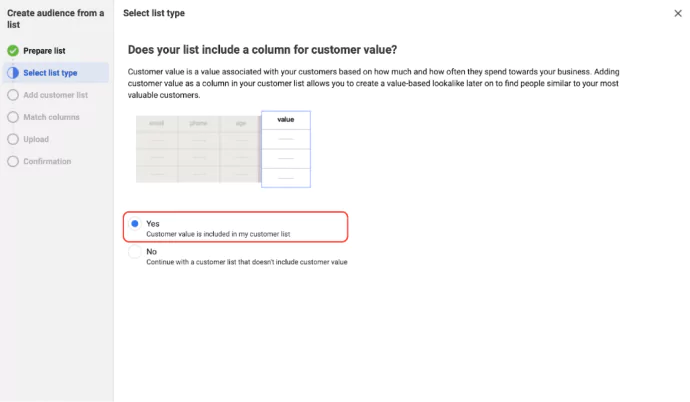
After that, upload the CSV file containing the user data with value. Then check.
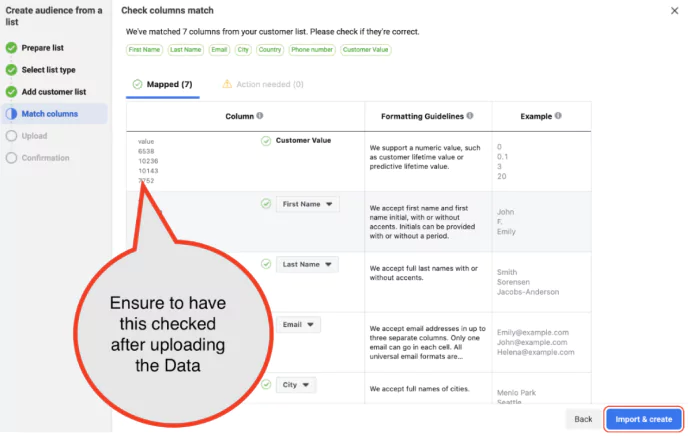
Import and create the value based custom audience.
Now, simply go to create lookalike, select this audience, choose the country and % of lookalike, click create audience.
Give it some time to populate.
To know more about value based lookalike audiences and also to find an effective alternative way to seamlessly integrate your customer data with value and achieve higher match quality, read the blog on Value based lookalike audiences in Meta Ads.
Did you know that you can also activate your anonymous website visitors on Meta Ads with better match rates?

Benefits and Use Cases:
| Title | Meta’s Value Based Lookalike Audiences | Google’s Value Based Bidding |
|---|---|---|
| What does it do | Creates an audience base of high-value customers | Smart bidding strategy that optimizes for high value conversions |
| Impact on existing customer data | Efficient expansion of customer base | Adjust bids in real-time for high value customers |
| Reach | Ideal to reach new users with similar interests and provide high value | Ideal to reach the existing audience in the group and bid to drive maximum conversion value |
| Bidding | Has no relation with bidding | Can optimize the bid for driving the desired target return on Ad spend (tROAS) |
| Optimization | Optimized for high LTV customers | Optimized for a single high value conversion |
| When to use | Use the value based lookalike audience in the campaigns where you want to drive high value conversions | Use VBB when you want to target a high value audience and convert them by adjusting bid in the real-time. |
| Suitable for | All types of businesses can use Example: eCommerce, Lead-gen, B2B, SaaS, etc. | All types of businesses can use Example: eCommerce, Lead-gen, B2B, SaaS, etc. |
Who Wins The Battle? Value based lookalike or Value based bidding?
By now, you’re familiar with the concepts of the Value-Based Lookalike Audience feature and Value-Based Bidding. These are two distinct concepts, unrelated yet would be a great duo if used together in combination with first-party data.
It’s not who wins the battle anymore. It is you winning the battle using these two powerful features Meta & Google Ads offers you.
Imagine the possibilities of the two concepts collaborating seamlessly instead of existing separately. The prospect of Google or Meta merging the strengths of both is a story worth exploring!

